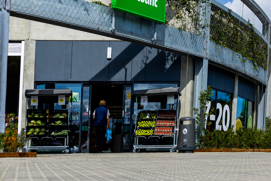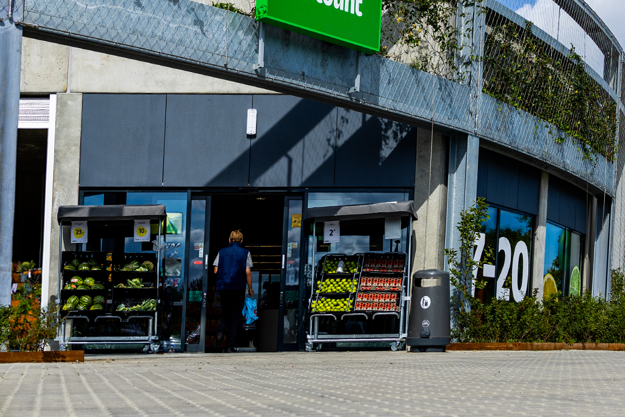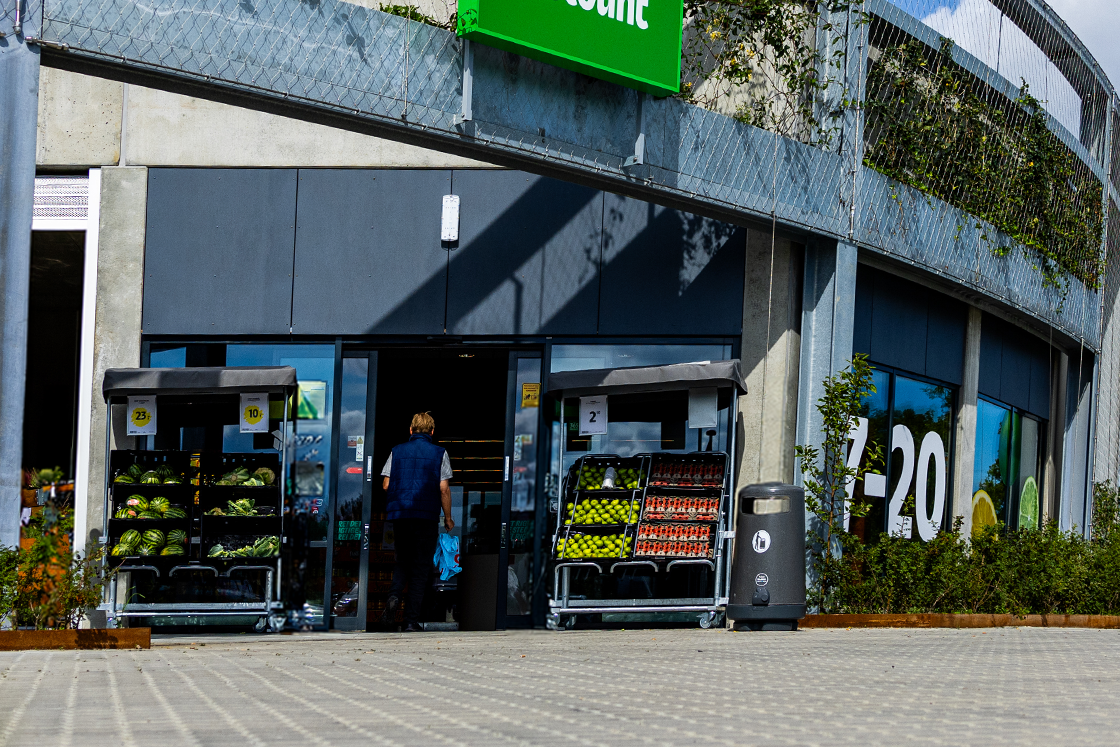Right now, all those things are changing like never before. Mega trends like electrification, digital communications, and the fight against climate change are creating both opportunities and challenges for the food sector, worldwide.
At Danfoss, we see that first-hand, because we work with hundreds of food retail chains in more than 60 counties. In particular, we see five big, overlapping changes that are combining to shape today’s workload for supermarkets’ teams…and five key ways to respond.
Intense pressure on operating margins makes cost savings essential
The average profit margin for a large food retailer currently stands at just 1.7%. This puts every operating cost under scrutiny—because it has a direct impact on competitiveness and profitability. What this means in practice: supermarket teams need creative ways to save operating costs—including new technology and partnerships. They might also need to implement the technology for new revenue streams.
Increasing food safety and reducing food loss are more important than ever
According the UN Food and Agriculture Organization (FAO), food wastage accounts for 3.3 gigatonnes of greenhouse gas emissions. Avoiding food loss has always been essential to limit costs; it’s now part of sustainability too. What this means in practice: retailers will need to keep their focus on maintaining safe refrigeration temperatures—and avoiding equipment breakdowns that waste time, money, and food.
Climate change regulation makes refrigerant choice critical
Initiatives like Europe’s F-gas regulations and US Climate Alliance are having a direct impact on refrigerant availability and cost worldwide. Choosing an alternative with low global warming potential has growing advantages. What this means in practice: choosing the right refrigerant brings advantages in cost, regulation, availability, environmental impact, and sometimes tax.
 |
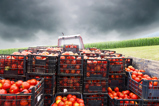 |
 |
 |
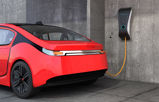 |
Utilizing waste heat as a resource
More than half the world’s population now lives in cities, and the United Nations predicts that it will climb to 68% by 2050. This means urban neighborhoods will need new ways of meeting energy challenges—such as China’s district heating systems. This can put retailers at the heart of the energy revolution. What this means in practice: in some Nordic countries, retail stores divert around 30% of their excess capacity into heating homes in the surrounding area. This is a potential source of revenue.
Electrification is a challenge… and an opportunity
Bloomberg estimates 57% of all new cars worldwide will be electric-powered within the next 20 years, and many retailers are already providing charging facilities. But there are also significant opportunities to benefit from energy arbitrage. What this means in practice: as well as infrastructure, retailers need to find ways to prevent expensive short-term spikes in energy use as vehicles charge. But those who can find flexibility in their energy demand may be able to proactively cut costs.
Overlapping challenges that demand a coordinated response
These five trends influence each other. For example, the opportunity to reduce energy tariffs by optimizing electricity demand is all the more compelling because of the need to find cost savings wherever possible.
In the same way, the changing food retail energy landscape needs a coordinated approach. We’ve identified five technical strategies which, when combined, will help supermarkets to stay ahead of—and in some cases benefit from—society’s emerging demands.

This isn’t the future. It’s happening right now.
Between them, these five approaches can help retailers to cut costs, minimize environmental impact, and find a competitive advantage, while safeguarding food safety.
They’re best used in combination; for example, heat recovery is much easier with a CO2 system, and smart case controllers maximize the benefit of monitoring online.
At Danfoss, we call this joined-up approach Smart Store. Food retailers around the world are already using it to improve efficiency, find new opportunities, and meet the sector’s current challenges head on.
We’ve compiled five articles to show you how each part works and introduce you to some of the real supermarkets who are taking the lead. You can also reach out to a Danfoss expert to discuss your store’s own individual needs.
-
if (isSmallPicture) {


 Smart Store
Smart StoreThe Smart Store solution enhances food safety and brings down the energy bill by integrated and smart control of refrigeration, HVAC, lighting and other applications.

